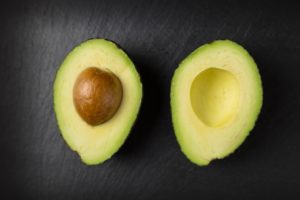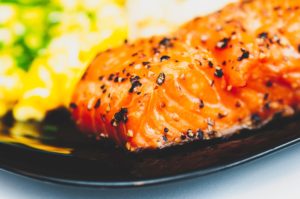February 2, 2016
Author: Kaci Adams-Registered Dietitian, Avance Primary Care
For years “FAT” has received a bad wrap, and has been associated with heart disease and weight gain. BUT should it be? Dietary fat was first deemed the heart’s enemy in the early 1950’s after studies were published that linked saturated fat and cholesterol with an increased risk of heart disease. In response to this evidence, America’s food manufacturers reduced the fat content of many customary foods and to retain palatability and flavor, replaced fatty ingredients with low fat, refined carbohydrate and sugary alternatives. Nonetheless, despite these changes, obesity rates continued to rise and heart disease remains the leading cause of death in the US. It is estimated that 69% of Americans are overweight and 35% of Americans obese. Further recent evidence has revealed that all fats have not been created equal. Continue reading for a closer look into the good, the bad, and the ugly world of dietary fat.

The GOOD: Fat is essential for increasing satiety, absorbing essential vitamins and minerals, insulation, nerve function, blood clotting, and healthy brain function (your brain is 60% fat). GOOD fats include monounsaturated and polyunsaturated fats (including essential Omega-3 and Omega-6 fatty acids – you must get them from food sources as your body cannot make them), which are liquid at room temperature and found to have a beneficial effect on the levels and ratios of HDL (good) and small dense LDL (bad) cholesterol. Monounsaturated fats are found in olive oil, peanut oil, canola oil, avocados, nuts, Canola Oil and high-oleic safflower oil. Polyunsaturated fats are found in corn oil, sunflower oil, and safflower oil. Omega-3 fatty acids, are found in fatty fish (salmon, mackerel, and sardines), flaxseeds, walnuts, and are also available in canola oil. Unsaturated fats have been found to improve the levels and change the type of LDL cholesterol, lower triglycerides levels and blood pressure, while improving HDL cholesterol. Omega-3 fatty acids in fatty fish are more bio-available and better absorbed than plant based sources; therefore, aim to consume fatty fish 2-3 times a week.
The BAD (or not so bad): Saturated fats are solid at room temperature and are found in fatty cuts of red meat, dairy products (except fat free milk products), cream, cheese, coconut oil*, palm oil and many commercially prepared baked goods. Recent research has failed to link all types of saturated fat intake with an increased risk of heart disease. But it is still recommended to limit total saturated fat intake to 7% of daily calories, as certain types of saturated fat can change the type of LDL cholesterol in the blood, which may still have an impact on heart disease risk in the long term. It is also important to remember that Saturated fat may have an impact on other disease risks including cancer, obesity and diabetes. Furthermore, research still associates replacing saturated fat with polyunsaturated/monounsaturated fat with a reduced risk of heart disease.
*Coconut oil- Coconut oil has been the Bradley Cooper or Taylor Swift of oils in the media lately, largely due to recent studies showing that it can raise your good (HDL) cholesterol and has antioxidant properties. However, you may want to think twice before you jump on the coconut oil bandwagon. It composed of 90% saturated fat making it higher in saturated fat than butter (64%), beef fat (40%), and lard (40%), and has been shown to raise (LDL) cholesterol as well! The proportion of saturated fat in the diet may further have an undesirable affect on other types of cholesterol and overall chronic disease risk. Therefore, coconut oil has a place in your diet if used sparingly as would small proportions of other types of saturated fats, but continue to choose unsaturated fats more often.
The UGLY: Trans Fat should be ELIMINATED from your diet. Trans Fat is produced during a chemical process called hydrogenation, which turns healthy oils into solids (saturated fat) in order to prevent them from becoming rancid. They raise LDL cholesterol and decrease HDL cholesterol as well as increase inflammation within the body, which increases your risk of stroke, heart disease, diabetes, and other chronic diseases. Trans fats are primarily found in stick margarine, vegetable shortenings, some commercially baked goods, some processed foods, and fried fast food. With help from We Raleigh, we are attempting to raise awareness of the harms of trans fat in the Raleigh area. Be sure to read food labels to determine the total grams of Trans fats available in each serving of food. Beware of hidden Trans Fats in food listed as “partially hydrogenated oil” under food label ingredient lists.
Bottom Line: Fats are a concentrated source of calories (9 calories per gram whereas carbohydrates and protein are only 4 calories per gram); they should be limited to 35% of your daily calorie intake to maintain a healthy weight. Saturated fats should be limited to 7% of calories, and Trans fats should be avoided. However, GOOD fats are essential for maintaining health and should be incorporated into a healthy diet. Always aim to replace saturated fats with polyunsaturated and monounsaturated fats. Cook with olive oil or canola oil; use soft vegetable tub spreads in place of butter, consume snacks providing healthy fats such as nuts, nut butters and avocados; and increase your intake of fatty fish (salmon, mackerel, and tuna) to improve heart health and reduce risk of chronic disease.
Resources:
http://www.health.harvard.edu/staying-healthy/the-truth-about-fats-bad-and-good
http://www.cdc.gov/obesity/data/adult.html
http://health.gov/dietaryguidelines/2015/guidelines/chapter-1/a-closer-look-inside-healthy-eating-patterns/#callout-dietary-fats-figure
http://www.health.harvard.edu/staying-healthy/coconut-oil
Honey-Soy Sauce Glazed Salmon
Ingredients:
- 2, 4oz salmon filets
- 1 tsp olive oil
- 3 Tbsp. Low-Sodium Soy Sauce
- 2 tsp. Honey
- 2 garlic cloves
- ½ tsp black pepper
- Non-stick cooking spray
Directions:
- Preheat oven to 400 degrees F. Line a baking sheet with aluminum foil, then coat with non-stick cooking spray.
- In a small skillet, heat the olive oil over medium heat.
- Add the garlic and cook until fragrant, about 2 minutes, watching carefully so that it does not burn.
- Add the balsamic vinegar, honey, and pepper. Whisk and simmer until the mixture thickens, about 4 minutes.
- Place salmon skin-side down on the prepared baking sheet. Pour glaze over salmon and bake for 10-15min. Fish should flake easily with a fork when cooked through.

Nutritional Information:
Calories: 295kcal, Fat: 16g, Sat fat: 3g, Mono-unsated fat: 6.7g, Poly-unsated: Fat 5g, Omega-3 Fatty Acids: 2.5g, Protein: 26g, Carbohydrates: 9g, Sugar: 7g, Sodium: 720mg
